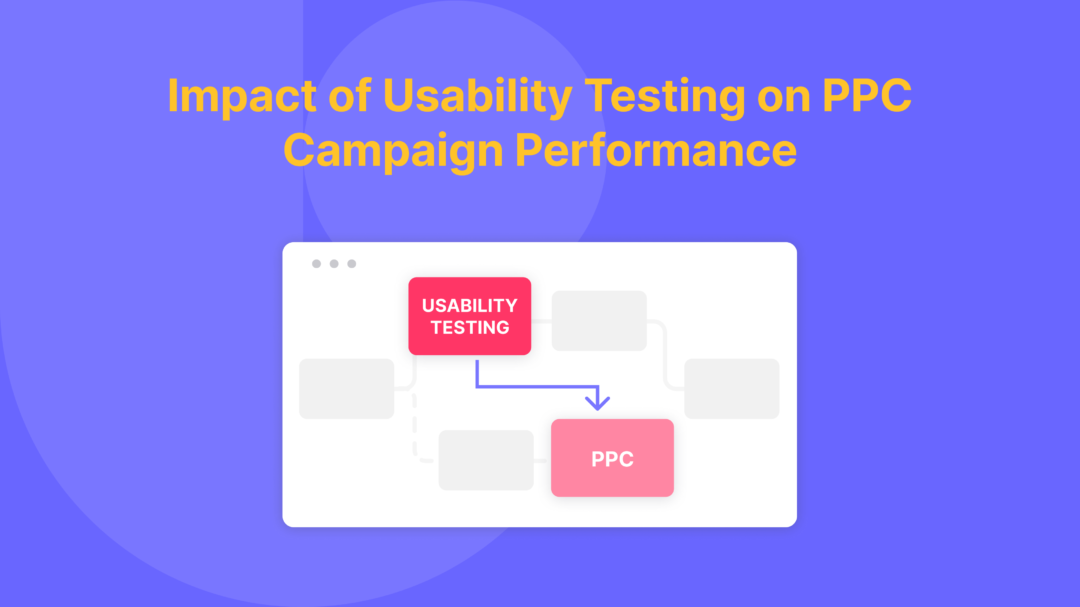Pay-per-click (PPC) advertising is more important than ever when it comes to getting focused traffic to your website. This is because the digital marketing space is always expanding, making it more difficult to redirect traffic to your site in this growing space. Still, things are shifting quickly when it comes to PPC success. The focus has grown from just smart bidding and search strategies to include the very important factor of UX user experience. As competition in the market heats up and customer expectations grow, UX is now one of the most important factors that determines the success or failure of your PPC ads. Check out our take on how Usability Testing and PPC work together, showing the importance of effective UX in getting the most out of your PPC strategy.
The Evolution of PPC
In its early stages, PPC advertising was relatively straightforward: identify relevant keywords, bid on them, and attract users to click on your ads. However, as the digital landscape matured, so did the complexity and demands of PPC campaigns. Today, the focus extends beyond mere click-throughs; it’s about delivering a holistic and satisfying user experience from ad impression to conversion.
1. Shifting Focus from Clicks to User Experience
In the past, success in PPC was often measured by the volume of clicks generated. However, marketers soon realized that high click volumes didn’t necessarily translate to meaningful interactions or conversions. This realization leads to a shift in focus towards optimizing the entire user journey, from ad engagement to post-click interactions.
2. Emphasis on Relevance and Quality
With search engines like Google placing greater emphasis on ad relevance and quality, simply bidding on keywords is no longer sufficient. Today’s PPC campaigns must align closely with user intent and deliver valuable, contextually relevant experiences. This requires meticulous keyword research, compelling ad copy, and landing pages tailored to meet user expectations.
3. Integration of User-Centric Principles
As user expectations continue to rise, PPC advertisers must adopt a user-centric approach to campaign management. This involves understanding the needs, preferences, and pain points of the respective target audiences and designing campaigns that resonate with their interests. By prioritizing user experience, businesses can differentiate themselves in a crowded marketplace and foster long-term customer loyalty.
You can read more on this in our article How UX User Testing Reinforces Marketing Efforts.
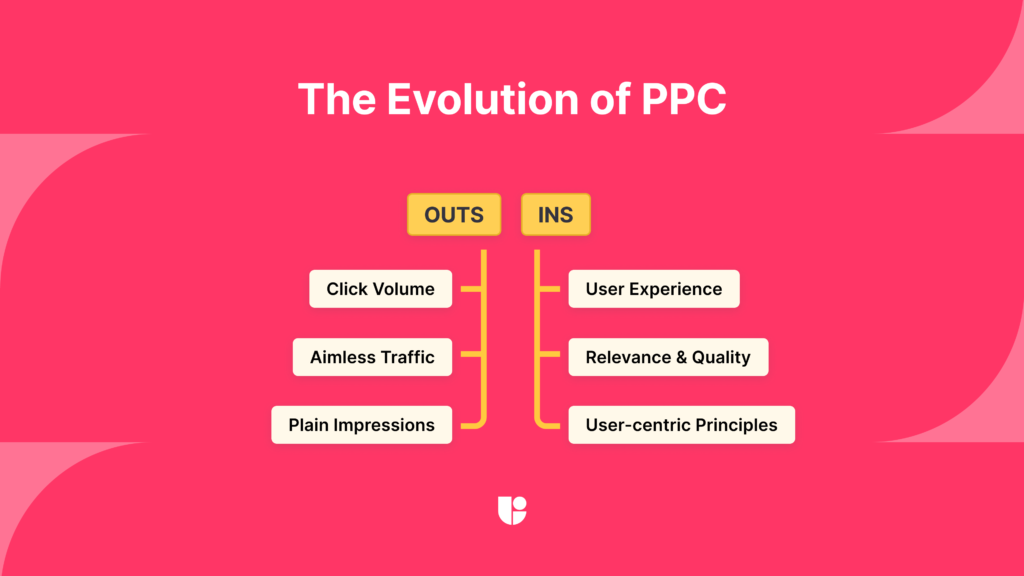
The Role of Usability Testing
Usability testing serves as a critical tool in the quest for optimizing user experience and maximizing the effectiveness of digital assets. By simulating real-world user interactions and soliciting feedback, usability testing provides actionable insights that inform iterative improvements to websites, applications, and digital campaigns.
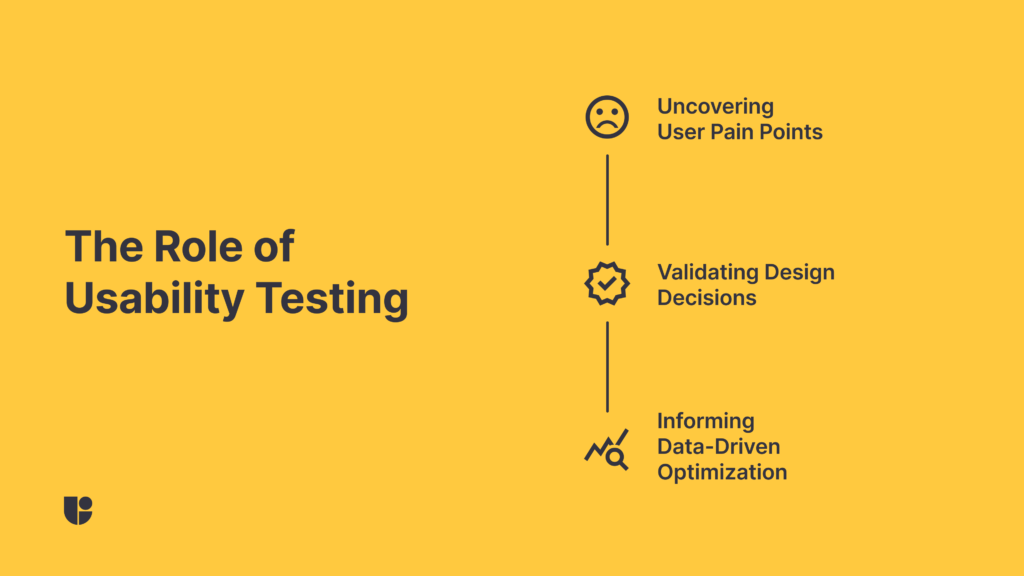
1. Uncovering User Pain Points
Usability testing enables businesses to identify areas of friction or frustration within their digital interfaces. By observing how real users navigate through websites or applications, marketers gain valuable insights into usability issues that may hinder engagement or conversion. These insights empower businesses to address pain points proactively and enhance the overall user experience.
2. Validating Design Decisions
Usability testing serves as a litmus test for design decisions, helping businesses validate hypotheses and iterate on concepts before deployment. By soliciting feedback from diverse user groups, marketers can ensure that design elements resonate with target audiences and align with their expectations. This approach minimizes the risk of costly design flaws remaining undetected and fosters positive development.
3. Informing Data-Driven Optimization
Usability testing provides qualitative data that complements quantitative analytics, offering a more holistic view of user behavior and preferences. By combining insights from usability testing with metrics such as bounce rates, conversion rates, and engagement metrics, marketers can pinpoint areas for optimization and prioritize initiatives that deliver the greatest impact. This data-driven approach enables businesses to optimize their digital assets systematically and iteratively, driving sustained improvements in user experience and campaign performance.
The Connection Between UX and PPC
So, how does usability testing relate to PPC? The answer lies in the user journey. A well-executed PPC campaign attracts users to your website, but what happens next is crucial. If your landing page or website doesn’t meet user expectations, loads slowly, or is difficult to navigate, users are likely to bounce back to the search results. This negatively impacts your PPC campaign’s performance metrics, such as click-through rate (CTR) and conversion rate.
Usability testing helps bridge this gap by ensuring that your website or landing page aligns with user expectations and provides a seamless experience. Here are some ways in which usability testing and a great UX contribute to optimized PPC campaign performance:
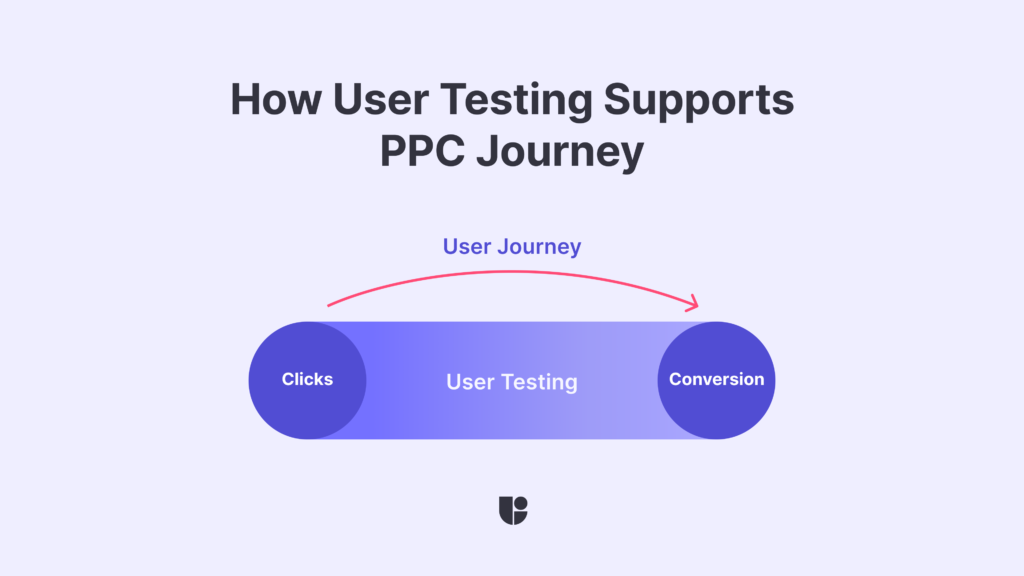
1. Improved Landing Page Experience
Usability testing identifies issues with your landing pages, such as confusing layouts, unclear messaging, or slow loading times. By addressing these issues, you can create landing pages that engage visitors and encourage them to stay, explore, and convert.
2. Higher Quality Score
Search engines like Google consider the quality of your landing page when determining your Quality Score, a critical factor in PPC campaigns. A well-designed, user-friendly landing page can lead to a higher Quality Score, which can, in turn, reduce your cost-per-click (CPC) and improve ad rankings.
3. Enhanced Conversion Rates
A seamless UX increases the likelihood that visitors will take the desired action, whether it’s making a purchase, signing up for a newsletter, or filling out a contact form. Usability testing can pinpoint obstacles in the conversion funnel and help you remove them, resulting in higher conversion rates.
4. Lower Bounce Rates
By providing a user-friendly experience, you can reduce bounce rates, which is the percentage of users who leave your site shortly after arriving. Lower bounce rates indicate that users are finding what they’re looking for and engaging with your content, which is a positive signal for search engines and PPC campaigns alike.
5. Better ROI
Ultimately, a great UX leads to a better return on investment (ROI) for your PPC campaigns. When users have a positive experience on your site, they are more likely to convert, and your advertising budget is put to more efficient use.
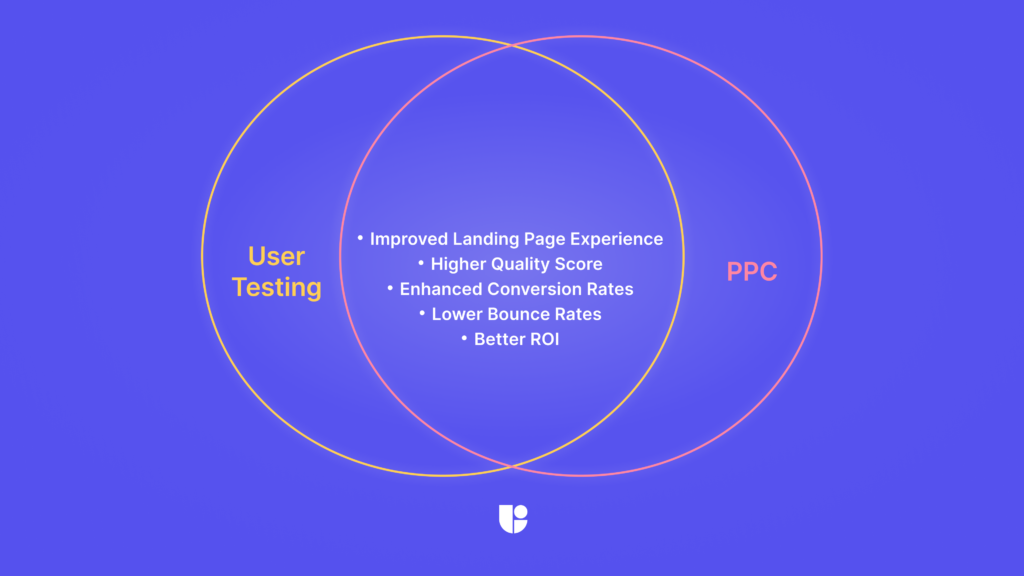
Usability Testing with Useberry
Now that we have discussed the importance of UX in PPC campaigns and the role usability testing plays in providing a good user experience; let’s see how we can run usability testing to get the insights that we need.
Useberry’s comprehensive website usability testing tool allows you to uncover critical insights into user behavior, preferences, and pain points by simulating real-world interactions. This invaluable feedback empowers you to refine your landing pages and ad creatives, ensuring they resonate perfectly with your target audience. By optimizing the user journey from the initial ad click to the final conversion.
If you are not familiar with live website usability testing, you can also watch our step-by-step guide in the video below:
Now that you are more familiar with Useberry’s usability testing, let’s take a look at some practical examples of how it could be utilized to review and optimize the UX performance of PPC campaigns, especially on the landing page experience:
1. Testing Loading Times
- Objective: Ensure the landing page loads quickly across various devices and internet speeds.
- Method: Use usability testing to experience visits from different devices and connection speeds. Monitor how long it takes for the page to become fully interactive and get feedback from the users on their experience with load times.
- Outcome: Insights from these tests can guide optimizations to reduce load times, preventing potential visitors from leaving before the page even loads.
2. Evaluating Key Messaging & Conversion Effectiveness
- Objective: Determine if the key messages and CTAs on the landing page are compelling and easy to find.
- Method: Conduct A/B testing with different designs, placements, and messages. Observe which versions drive the highest engagement and conversions.
- Outcome: Use these insights to implement the most effective designs, improving the conversion rate from ad clicks.
3. Testing Content Relevance and Engagement
- Objective: Verify that the landing page content is relevant and engaging to users coming from PPC ads.
- Method: Gather feedback through testing about the content’s relevance, clarity, and value.
- Outcome: This direct user feedback can guide content adjustments to better match user expectations and interests, increasing the likelihood of conversion.
5. Comparing User Expectations vs. Reality
- Objective: Ensure the landing page meets the expectations set by the ad in terms of offerings, benefits, and overall message.
- Method: Take advantage of Useberry’s question and survey blocks to ask participants about their expectations after clicking the ad and whether the landing page meets those expectations.
- Outcome: Aligning the ad’s promise with the landing page experience improves user trust and satisfaction, reducing bounce rates and increasing conversions.
Conclusion
As the digital marketing landscape continues to shift and expand, the roles of usability testing and superior user experience (UX) in refining PPC campaign outcomes have solidified into essential strategies. Ensuring your website or landing pages meet and exceed user expectations with a seamless journey can significantly enhance performance indicators, cut down expenses, and boost the return on investment from your PPC campaigns. With user demands rising, the commitment to usability testing and a focus on UX is no longer optional. It has become a key necessity for achieving PPC success.
Unlock more ways to maximize your campaign results!
Gain now further insights and elevate your PPC game!


